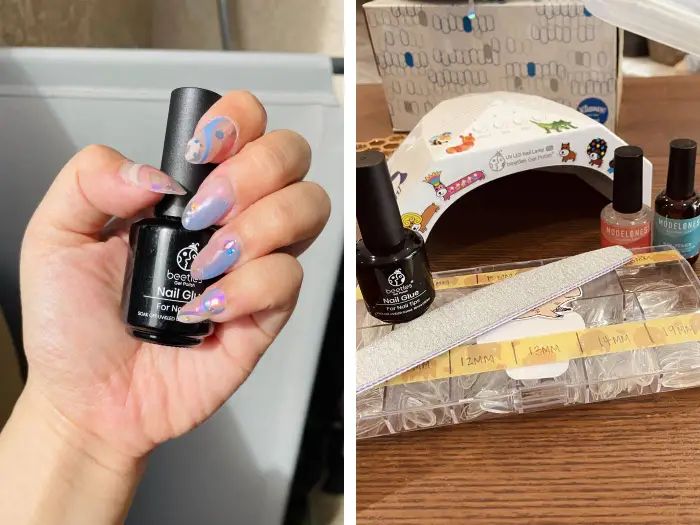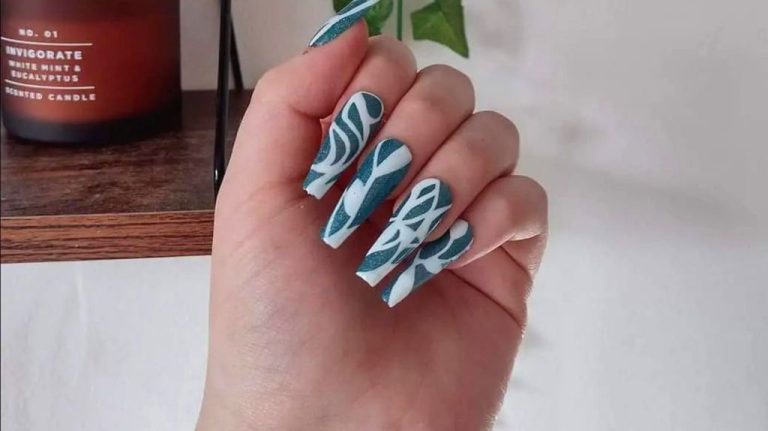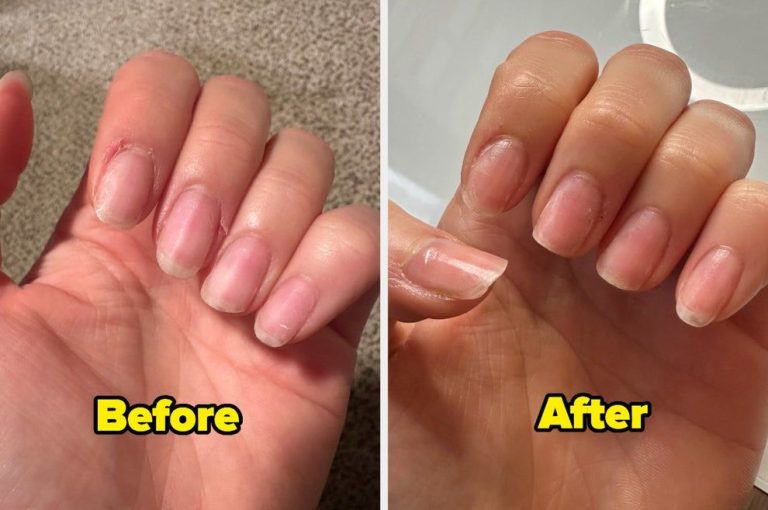Sensitive Skin Savvy: Choosing Gentle Nail Products For Allergy-Prone Hands
Sensitive skin is characterized by skin that is easily irritated by topical products, leading to redness, stinging, and other uncomfortable reactions. Hand dermatitis, including allergic contact dermatitis, is one of the most common occupational diseases. Studies indicate that the prevalence of self-reported hand eczema signs among healthcare workers ranges from 21% to 35% [1]. This article provides tips for those with sensitive skin or allergy-prone hands on choosing gentle nail care products to avoid reactions.
Common Hand Allergens
Some of the most common allergens found in nail products include:
Formaldehyde – This is added to nail products as a hardening agent and preservative. Formaldehyde exposure can cause contact dermatitis, breathing difficulties, headaches, and other reactions (source).
Toluene – A solvent used to improve application and finish of nail polishes. Toluene can irritate the eyes, throat and skin. Prolonged exposure has been linked to developmental and reproductive harm (source).
Dibutyl phthalate – Added to improve flexibility and prevent chipping. Dibutyl phthalate is known to disrupt hormone function and may cause birth defects (source).
Fragrance – Scents and perfumes are common triggers for skin irritation and allergic reactions. Studies show fragrance is among the leading causes of cosmetic contact dermatitis (source).
Signs of a Reaction
Common signs of a reaction to nail products include redness, itching, swelling, rash, and peeling of the skin on the hands and fingers. These symptoms indicate contact dermatitis, which is an inflammatory reaction of the skin caused by an allergen or irritant.

Redness and itching around the nail beds are typical early symptoms. As the reaction progresses, the skin may become increasingly irritated and swollen. A rash of small blisters or bumps may develop. In severe cases, the skin can crack, ooze and peel.
These reactions are the body’s way of responding to an irritating substance. Common nail product allergens and irritants include ingredients like formaldehyde, toluene, dibutyl phthalate (DBP), and triphenyl phosphate (TPHP). When the skin is exposed to these chemicals, especially in sensitive individuals, it can trigger an immune response that leads to inflammation and dermatitis.
It’s important to discontinue use of any product that causes a reaction. Leaving the allergen in contact with the skin can worsen symptoms. Promptly washing the hands can help calm the irritation and aid healing.
Ingredient Labels
When choosing nail products, it’s important to read the ingredient label carefully. The FDA requires nail products to list all ingredients, in descending order of predominance by weight. This helps consumers identify potential irritants or allergens.
Watch out for these common irritants in nail products:
- Formaldehyde – a known human carcinogen banned in nail products over 0.2% concentration (1). Look for methylene glycol, quaternium-15, imidazolidinyl urea, and diazolidinyl urea as possible formaldehyde releasers.
- Triphenyl phosphate – a plasticizer that can cause skin irritation (2).
- Toluene – an industrial solvent linked to reproductive harm (3).
- DBP (dibutyl phthalate) – a plasticizer banned from nail products for causing birth defects (3).
- Camphor – can cause skin irritation and allergic reactions (2).
- Fragrance – a frequent cause of allergic contact dermatitis (3).
The FDA does not approve individual cosmetic ingredients, formulations, or products. However, coloring ingredients must be approved and nail products cannot contain banned substances (1). Always check labels and avoid products with questionable ingredients.
Safer Ingredients
When shopping for sensitive skin-friendly nail products, look for plant-based formulas free of common allergens. Here are some labeling terms to understand:
- Plant-based: Formulas made from plants and minerals instead of harsh chemicals. Tend to be gentler on skin.
- 5-free: Excludes 5 common allergens – formaldehyde, toluene, dibutyl phthalate (DBP), formaldehyde resin and camphor.
- 7-free: Leaves out those 5 plus xylene and ethyl tosylamide.
- 9-free: Eliminates the 7 above plus parabens and animal-derived ingredients.
- 10-free: Goes further by removing triphenyl phosphate (TPHP). Considered one of the healthiest options.
Higher-number formulas continue taking out additional concerning ingredients for sensitive hands. While not completely allergen-free, they provide cleaner options.
Product Recommendations
When choosing nail polish, look for brands that specifically advertise themselves as non-toxic, “free of” harsh chemicals, or made with natural ingredients. Some top recommended brands include:
- Olive & June – This brand offers a proprietary 7-free formula and vibrant colors (see https://healthstartsinthekitchen.com/the-best-non-toxic-nail-polish/).
- Jinsoon – Jinsoon polishes are 11-free and made without formaldehyde, toluene, and other harsh chemicals (see https://www.goodhousekeeping.com/beauty/nails/g28834890/best-natural-non-toxic-nail-polishes/).
- ZOYA – This widely available brand excludes many nasty ingredients and offers a large color selection.
- Orly – Orly polishes are vegan, cruelty-free, and free of many chemicals.
- Essie – Select polishes from Essie are now 7-free or 9-free formulas.
- Sally Hansen – The “Good. Kind. Pure.” line is free of formaldehyde, toluene, and other harsh ingredients.
Look at the ingredient list and avoid polishes with triphenyl phosphate, camphor, dibutyl phthalate (DBP), formaldehyde resin, and xylene. Seek plant-based formulas infused with nourishing oils and waxes. Always do a patch test before full application.
Application Tips
Proper ventilation when applying nail products is crucial to avoid inhaling fumes that may cause an allergic reaction. Make sure there is adequate airflow in your workspace by opening windows or using exhaust fans. Consider wearing a mask while applying products as an extra precaution.
Moisturizing your hands before applying products can create a protective barrier against ingredients that may irritate skin. Apply a gentle, fragrance-free hand cream after washing hands to lock in moisture. Reapply after removing polish to soothe skin.
Wearing gloves while applying nail products is recommended to avoid direct skin contact with potential allergens. Opt for powder-free vinyl or nitrile gloves rather than latex. Be sure to change gloves between clients to prevent cross-contamination.
When to See a Doctor
See your dermatologist if you experience a persistent or severe reaction to nail products. Signs to watch for include:
- Itching, pain, swelling, or redness that lasts more than a few days or keeps recurring
- Cracked, scaly, flaky, or peeling skin that does not improve
- Blisters or open sores on the fingers or hands
- Significant impact on your daily activities or quality of life
A dermatologist can help diagnose the specific allergen through patch testing. They may prescribe topical corticosteroids, immunomodulators, or other medications to reduce inflammation and itching. For severe chronic hand eczema, phototherapy or oral medications may be recommended. Identifying and avoiding your triggers is key to preventing flare-ups.
Sources:
https://nationaleczema.org/eczema/types-of-eczema/hand-eczema/
https://www.aad.org/public/diseases/eczema/types/hand-eczema
Other Nail Care Options
If you have sensitive skin or allergies, you may need to avoid traditional nail polish and look into alternative nail care options. Here are some hypoallergenic choices to consider:
Gel Manicures
Gel manicures use a special gel formula that is cured under UV or LED lights. Many gel polish brands are free of harsh ingredients like formaldehyde, toluene, and dibutyl phthalate (DBP). Look for gel polishes clearly labeled as “3-free” or “5-free.” Two hypoallergenic gel manicure options are Prima Gel and Ovation Sculpting Gel.
Nail Wraps
Nail wraps like Jamberry or Color Street stickers go on without any harsh polish or glue. The wraps can last 1-2 weeks on natural nails. Look for nail wrap brands that are formulated without formaldehyde, toluene, phthalates, and other common allergens.
Mineral Makeup
Some mineral makeup lines like Zorah offer opaque mineral powders for use on nails. These powder polishes go on smoothly and don’t require any base or top coat. The key is finding mineral nail polishes without irritating ingredients like synthetic dyes and fragrances.
Conclusion
In summary, sensitive skin on the hands and nails can easily react to common ingredients found in nail products. Being aware of the signs of a reaction, like redness, swelling, irritation, and itching, is important. Carefully reading ingredient labels to avoid known allergens is key to preventing uncomfortable reactions.
Choosing products formulated with gentler ingredients better allows those with sensitivities to enjoy painting their nails safely. Opting for “hypoallergenic” or “free-from” products, or those with plant-based ingredients, is a good place to start. Applying products properly and doing a patch test can also minimize the risks of a reaction.
If you do experience persistent issues with your hands or nails, consult a dermatologist, who can help determine if an allergy is at play and recommend alternative products or ingredients to avoid. While sensitive skin may require some adjustments, there are still nail products and techniques that make it possible to have pretty, polished nails.





